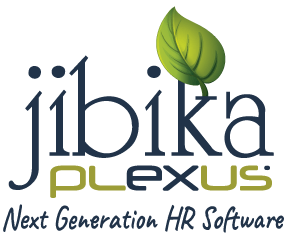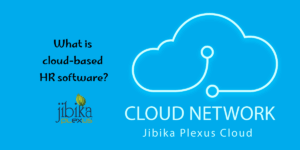Bangladesh is witnessing radical changes in its workforce management as a rapidly developing country with a mix of industrial sectors. With increasing economic growth in the country, the importance of high-achieving and working individuals has underlined the necessity of having capable workforce management software.
In this article, we look at the scenario of the state of the workforce management in Bangladesh, what industries have to lose, and what are the budding solutions which are going to shape the future of work in Bangladesh.
The State of Workforce Management in Bangladesh Today
Bangladesh’s labor force is massive and comprises the most varied kinds of population. Bangladesh had a total labor force of around 75.83 million people in 2023. However, even if the discrepancy was not too substantial, the labor force participation rate of 61.7% in December 2023 was down from 61.9% a year earlier.
This vast number of people is distributed in various sectors, and the ready-made garment (RMG) sector is the largest one, providing jobs for over 4 million people and driving a substantial portion of the country’s GDP and export revenues.
But still, a modern workforce management system is being implemented for the first time in Bangladesh. Most organizations stick to traditional approaches because the cost and awareness regarding superior solutions are low. Even so, the digital adoption index of the business sector in Bangladesh is low, at 0.35/1, showing that the industry still needs more digitization.
Managing the workforce comes with challenges
Bangladesh’s economy comprises different industries such as RMG, textiles, agriculture, pharmaceuticals, information and communication technology (ICT), etc. Each of these industries has workforce management challenges like the following:
Skill Development: Continuous modernization programs are urgently required for the upgradation of the workforce (especially with the increasing amount of automation and digitalization).
Security & Compliance: Obdurate compliance with global labor standards and workplace safety continue to be vital areas of concern in the RMG sector.
On the Flip Side, Technological Adoption: To this day, many industries—agriculture, for instance—are bogged down by the past and miss out on technologies that could exponentially increase the productivity of their workforce.
Gender Gaps: Labor force participation is starkly gendered; only 43% of working-age women participate in the labor force compared to 80% of men.
Abundant Informal Economy: Much of Bangladesh’s workforce resides in the informal economy, which has few protections. 85% of total employment is gained in this sector.
Innovations in Workforce Management Solutions
However, Bangladesh is experiencing the initial stages of a transition toward more innovative workforce management systems:
Digital Workforce Solutions
Digital workforce solutions are being used more widely in the IT sector. From tech-based remote work to e-recruitment, virtual team management, and e-learning, several virtual HRM practices have started to emerge. Notably, these practices have positively affected organizational culture by fostering flexibility, collaboration, and continuous learning.
International Solution Providers
Some international workforce management solution providers have already come to Bangladesh to provide workforce management solutions and best practices:
Dexian: Provides a blend of services designed to provide organizations with expert workforce management solutions that elevate business.
Oracle Corporation: They offer end-to-end solutions designed to work with existing enterprise systems. It is aimed at big-ticket enterprises looking for a strong workforce management solution.
SAP SE: Provides a range of employee management solutions that are part of its broader ERP offerings.
Workday Inc: Offers enterprise cloud applications mainly for financial management, human capital management, and analytics.
Adaptations and Innovations in Local Context
Even if individual local companies are not mentioned, it can be assumed that the nascent Bangladeshi IT sector is providing industry-specific custom workforce management systems. These solutions usually target the specific challenges of industries like textiles and manufacturing, which are prominent in Bangladesh.
Government Programs and Policies
Regulatory Policies for Workforce Management by the Bangladeshi Government:
Bangladesh Labor Act of 2006: This act, together with consecutive amendments, represents one of Bangladesh’s most significant portions of labor law. It regulates working hours, wages, leave entitlements, and occupational safety, among other things.
Smart Bangladesh 2041: This government program aims to transfer the country to the next level of technology-based state by 2041. Digital strength has already been planned to be built up in the development of human resource management solutions.
Partnership with international organizations: To promote the reform of local labor laws and enhance worker rights, the government partners with the Fair Labor Association (FLA) and the American Apparel & Footwear Association (AAFA).
Real-World Examples of Implementation
Here are a few Bangladeshi companies that successfully implemented effective workforce management strategies:
Dong-Bang Textile Ltd.: This Korean-Bangladeshi a joint venture is a corporate reputation winner in diversity management with the penetration of various diversity strategies such as academic training and mentoring for a culturally enriched corporate culture and healthy human ensure capital.
Padma Oil Company Limited and Petro Bangla: The oil sector companies Padma Oil Company Limited and Petro Bangla are using talent management processes to retain high-quality employees and increase engagement, which provides them with sustainable competitive advantages.
RMG Sector: Several organizations within the RMG sector have sought to enhance their workforce productivity and organizational resilience by emphasizing manufacturing flexibility and managing environmental uncertainty.
What the Future Holds for Workforce Management in Bangladesh
As Bangladesh develops further, the implementation of a sophisticated workforce management system will become vital to increasing productivity and competitiveness in different sectors. Bangladesh has the makings of a demographic dividend—but only if it can turn its working-age population into people with skills to sell.
Areas of development include:
Rise of Digitalization: Growing widespread usage of digital workforce solutions across industries to drive efficiency and productivity.
Skill Development: More focus on training and upskilling for an evolving job market.
Laws: Efforts to bring local labor laws closer to international standards and expand coverage to protect all workers, including those in the informal and gig economies
Gender equality: Programs to engage more women in work and reduce gender inequalities in access to work.
Final Verdict
All in all, there is a long way to go in terms of managing Bangladesh’s workforce, but progressive changes are taking place to bring forth higher, more defined, and reliable solutions. With the use of technology, well-structured regulatory frameworks, and a skilled workforce mix, Bangladesh can optimize its workforce management and keep flourishing as an economic beacon going forward.







